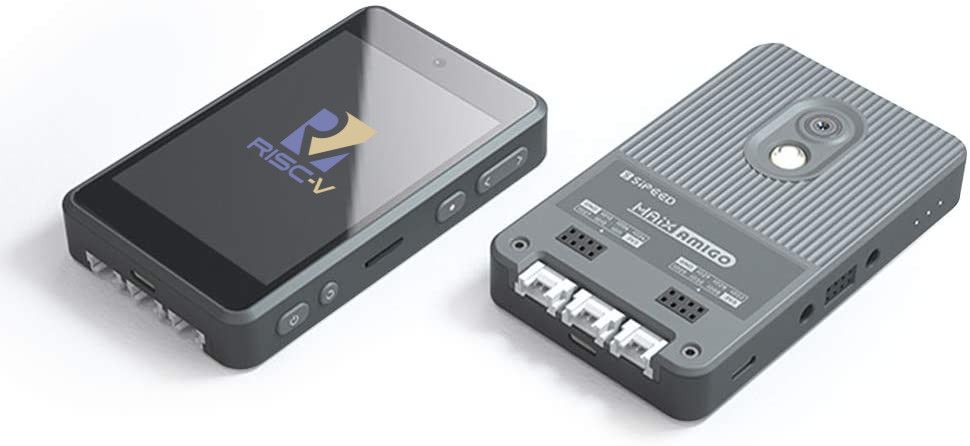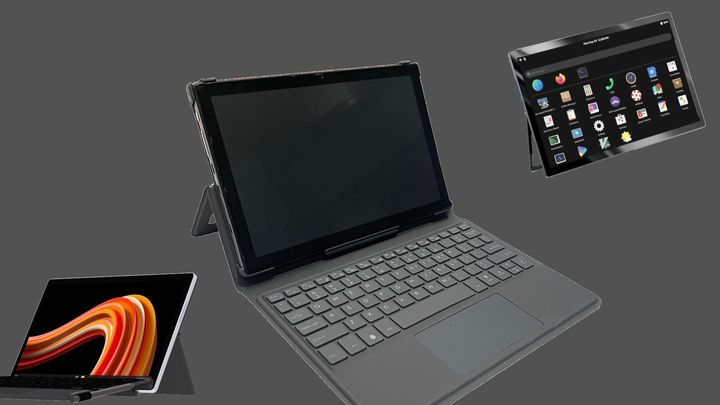The world's first RISC-V phone might be just around the corner

The RISC-V ISA is commonly divided into two architectures, namely RV32 and RV64, covering 32-bit and 64-bit register sizes respectively. And although the RV64 standard is not yet fully RV32-compatible, the two are, except from some minor divergences, closely associated products of the same family.
In fact, it took some years to see the Linux kernel running on RV64 (and partially RV32). The first obstacle was predictably the lack of suitable and powerful enough silicon for the new software, and the next - which was thankfully solved quite fast - was porting the entire kernel to a new architecture.
But now, with Linux support approaching full stability on a variety of RISC-V chipsets, distributions like Alpine starting to add support for RV64 packages, and an increasing quantity of chips powering Linux single board computers which retail for prices as low as $12, another challenge for most consumer producers occurs: how to turn this into a competitive ecosystem for Android smartphones?

The reasons for pushing this transition so fast are varied, and not always bound to the lack of royalties of this standard or the ideal of open hardware, which is not often on the radar of most tech manufacturers. Rather, with the growing concerns of China (and Europe) to make new technology fully detached from the numerous US-owned patents after cases like the Huawei ban, most Eastern chipmakers have also turned, alongside Western giants like Intel, MIPS and Apple, to this ISA for its flexibility, and ease for development to bake new cores from existing ones.
The first major step on porting Android to RISC-V was, unsurprisingly, authored by Alibaba, who produced the first working Android 10 port for the RISC-V ISA. Complete with GPU drivers, although appearing somewhat throttled in performance, the T-Head XuanTie board was shown booting Android as early as 2020.
But it was just some days ago that the leading RISC-V manufacturer Sipeed showed a full Android 10 system running quite smoothly on the XuanTie C901 attached to a 7-inch-ish touchscreen. Being arguably the major RISC-V brand around, Sipeed also produced the smartphone-like Maix Amigo development kit last year as a first experiment of free-hardware PDA.

Even more importantly, Sipeed hinted in the tweet seen below that a RV64-based phone would be coming already next year. We contacted the manufacturer for confirmation, and while we did not get much more information due to the very early stage of design, we received confirmation that the developer-oriented model of a first RISC-V smartphone could indeed arrive as soon as 2022/2023, becoming effectively the first full RISC-V smartphone on the planet. That is, if we do not count the Precursor as one.
Qualifying also as (probably) the first open-hardware smartphone around, the Sipeed phone should theoretically allow for full Linux to be ported with much more ease than on most closed-source (and arguably over-engineered) contemporary ARM chips, becoming a matter of writing a Device Tree file and not much more.
Nothing else is known, or was told to us, at the time of writing. But according to Sipeed, the RISC-V phone should be more powerful than [some] quad-core A73 processors, thus possibly aligned with Qualcomm's Snapdragon 663 or 662 SoCs. Waiting for further updates by Sipeed, for the moment we will leave the latest video of RV64/C910 running Android 10 below, in the hope of seeing developments in the near future.
RISC-V 64bit chip (C910) run Android 10~
— Sipeed (@SipeedIO) November 8, 2021
RV64 phone will coming next year~ pic.twitter.com/qc7ubSd2DW
Cover picture: Sipeed Maix Amigo development board from 2020, with a 500MHz RV32 core, 3.5" capacitive touchscreen, and camera
You can follow TuxPhones on Twitter and Mastodon, or join our semi-official subreddit to have the latest news about Linux smartphones.




Comments ()